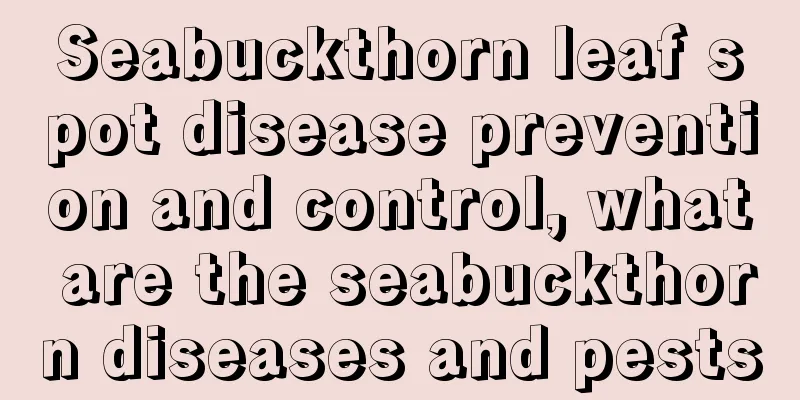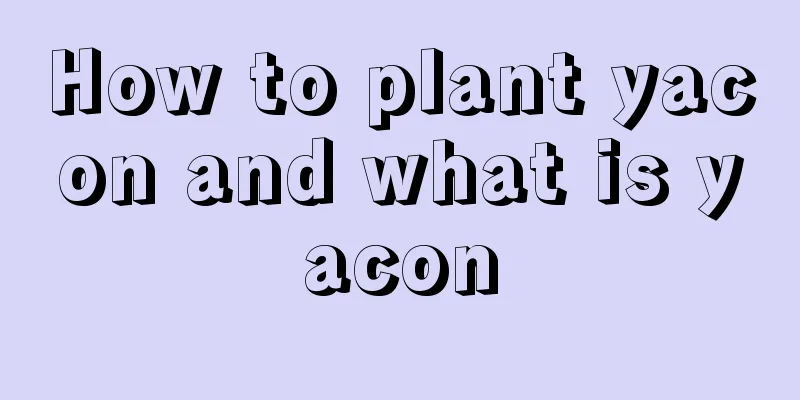Seabuckthorn leaf spot disease prevention and control, what are the seabuckthorn diseases and pests

1. Leaf spot disease prevention and controlLeaf spot is a disease that often occurs in the seedling stage of sea buckthorn. In the early stages of the disease, circular spots will appear on its leaves, which will gradually expand and cause the leaves to dry up and fall off. If you want to prevent and control it, you can mix the fungicide powder with 1000 times water to make a solution, and use it to spray the plants once every 10-15 days. Spraying two or three times in a row will be effective. 2. Common pests and diseases1. Sea buckthorn wood borer: The larvae of this pest will harm the branches and roots of the plant. They will drill into the trunk to eat, and then slowly move downward, destroying the roots of the plant, causing it to dry up and die. As the most harmful pest, there is currently no good way to prevent and control it. The only thing that can be done is to use black light to lure and kill the adult insects. In addition, the crops should be cut evenly every year during planting to avoid any remaining pests. 2. Red-margined longhorn beetle: This pest is also very harmful. Its larvae will eat branches and trunks, forming tunnels inside the trunks, affecting the looseness of water and nutrients, thus weakening its growth, and in severe cases will cause the tree to wither and die. Generally speaking, red-margined longhorn beetles will only harm older plants with poor growth, as plants with good growth have the ability to protect themselves. If you want to prevent it, you can eliminate the source of insects by pruning. 3. Wilt disease: Wilt disease is a common disease of sea buckthorn. The leaves of diseased seedlings will turn yellow, the stems will dry up, and eventually the entire plant will die. When mature plants become diseased, bumps will appear on the bark, the leaves will fall off, and the branches will die. This disease is usually caused by fungi and too much nitrogen in the soil, so it is necessary to increase the application of phosphorus and potassium fertilizers to inhibit it. In addition, it is necessary to spray with Zineb solution once every 10-15 days, and spray 2-4 times. 4. Rust: Rust mainly harms sea buckthorn seedlings, usually occurring from June to August. Diseased plants will have yellow and dry leaves, the plants will also be stunted, and there will be circular spots on the leaves. This disease is usually prevented. In June, Bordeaux mixture should be sprayed once every 15-20 days. Spraying 2-3 times in a row can reduce the possibility of disease. |
<<: What is the disease of rose leaf curling? What should I do if the leaves curl?
>>: How to deal with peach blossom pests and diseases, symptoms of peach blossom pests
Recommend
Are orchids shade-loving or sun-loving plants?
Do orchids prefer shade or sun? Orchid is a shade...
How to plant glass jade? Planting time and method
Glass Jade Planting Time Glass Jade is best plant...
Where do pineapples grow?
Pineapple Introduction Pineapple growth habits Pi...
Can bougainvillea be pruned in summer? What season is best for pruning?
The growth rate of bougainvillea is relatively fa...
Diary of the growth process of garlic sprouts
1. Peeling and soaking Choose full garlic cloves,...
What is the reason why bougainvillea does not bloom?
Bougainvillea is favored by gardening enthusiasts...
How many years does the jujube tree bear fruit?
Introduction to Planting Jujube Trees Red dates l...
Breeding methods and precautions of Zephyranthes
Zephyranthes is also known as leek lily and wind ...
How to propagate chrysanthemums by cuttings
When propagating chrysanthemums by cuttings, the ...
How to water Forsythia
1. When to water First of all, when you just plan...
What is the most profitable plant?
1. Planting trees Trees have a wide range of uses...
These 4 kinds of flowers can burst into bloom if placed in green belts, but they will die in 3 days if kept at home!
The blue snowflakes in the green belt bloom in la...
The difference between false nightshade and lantern fruit
1. Leaf Difference The leaves of Physalis are sim...
How often should I water Milan?
How often should I water Milan? Milan likes moist...
How to grow Jianlan Jinhe
1. Potting soil Jianlan Jinhe has strong adaptabi...









